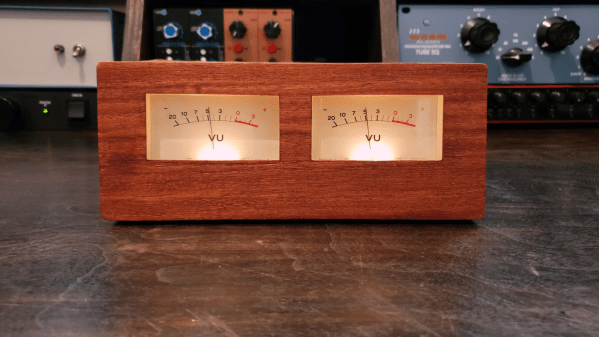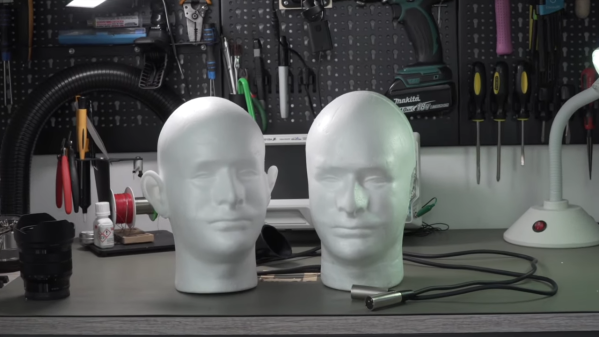If you’re going to build a nice VU meter bridge for the recording studio, the first thing you need is a nice pair of VU meters. But lest you think it’s as easy as putting some meters into a nice box and calling it a day, think again.
This project comes to us from [Frank Olson], whose projects usually incorporate wood as part of the mechanism, as with his famous wooden ribbon microphone. This build does indeed use wood, and to excellent effect, but only in the project’s final enclosure. Before that, [Frank] had salvaged a pair of good-looking moving coil meters from an old tape recorder. He muddled through some ideas before settling on a design. A NE5532 dual-channel audio buffer module is used as a preamp, with each channel feeding into a bridge rectifier before heading to the meter. Wisely, [Frank] chose to illuminate the meters with their existing incandescent bulbs, so a small DC-DC supply was added to provide the necessary 8 volts.
As for the enclosure, that’s where [Frank]’s experience working with veneers paid off. He chose mahogany, carefully cut all the pieces to shape with a knife, and glued it all up with CA glue — at least we assume it was CA; based on previous efforts, he uses a lot of the stuff. The tung oil finish looks fantastic, and the completed build aesthetic looks great! The video below shows it all.
If you need some backstory on the VU meter, we can help with that.
Continue reading “Salvaged Meter Movements Really Pop In This DIY VU Meter Bridge”















